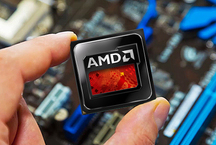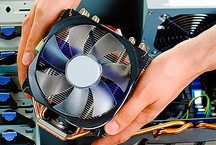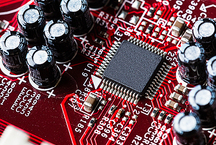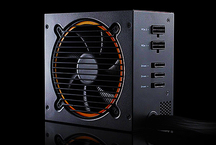Top 5 Intel processors

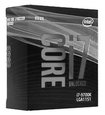


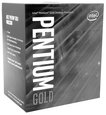
The history of this company can already be cited as classics in lectures on the harm of monopolies. Indeed, in many respects in recent years, Intel’s motto, which held the lion’s share of the market, could be considered “to buy it anyway” - from generation to generation (in fact, the roots of modern series are all in the same Sandy Bridge 2011), processor performance has received a slight increase (joke about “A cardinal increase in speed by 5%” appeared not in vain), but the company produced incompatible sockets and made very ambiguous technical decisions. Buy a new processor and immediately disassemble it, losing the warranty, but solving the problem with overheating? Yes, the scalping of processors was invented precisely because of the infamous “thermal cable” from Intel, which was replaced by solder under a heat distribution lid back in 2012 Ivy Bridge. But they still bought it anyway, why would anyone in Santa Clara fuss? Finally, the prices for the "blue" processors continued to grow, reaching already indecent (the price growth outpaced the growth of real performance), and in 2018 even the news about new hardware vulnerabilities discovered in Intel processors began to pour out of the cornucopia almost all models are exposed in the last 25 years).
Only recently the company has somehow moved, and this is again a classic example from a series of lectures on competition in the market. Recalculate what Intel has managed to do in Intel after the announcement of the Ryzen and Threadripper AMD lines: here you have the multi-core HEDT range “stoves”, and finally the old processors “4 ... okay, 6 cores are enough for everyone” mass processors, and lo and behold - returning in the 9th generation solder. History repeats itself: remember how, at one time, AMD introduced the first processors with 64-bit architecture to the personalk market, and Intel not only had to hurry to catch up with the red ones, but also to buy a license for x86-64 from those. And this despite the repeated repetitions of the then “experts”, they say, the 64-bit personal computer is not necessary at all.
And what do we have now? That's right, 32-bit processors have already gone down in history. And now the “race of nuclei”, which has begun, accompanied by jagged statements “there is no need for a multithread” by homegrown “experts,” clearly should seriously push software developers.
Top Intel 2018 processor rankings
| Category | A place | Name | Rating | Price |
|---|---|---|---|---|
| Top Intel Top Processors | 1 | Intel Core i7-9700K | 9.7 / 10 | 33 784 |
| 2 | Intel Core i9-9900K | 9.7 / 10 | 41 990 | |
| Intel's top midrange processors | 1 | Intel Core i5-9600K | 9.7 / 10 | 22 118 |
| 2 | Intel Core i3-8350K | 9.0 / 10 | 14 218 | |
| Top entry-level Intel processors | 1 | Intel Pentium Gold G5500 | 9.0 / 10 | 7 590 |
Top Intel Top Processors
|
33 784
If we chose the best Intel processor for “here and now”, then we would definitely choose Intel Core i7-9700K. See for yourself: the difference in price from 9900K is more than a third, and the difference in performance is much less than in work applications, which (even more so) in games. Not surprisingly, there are as many physical cores here (eight instead of the previously maximum for i7 six), which allows processing enough threads even considering that Hyper-Threading is not available here. However, it has long been known that sometimes disabling Hyper-Threading even increases the speed of some applications, and the “hole” in this technology, which has recently opened, also plays a role - one cannot say that disabling HT has become such a loss. The base clock frequency is even slightly higher than that of the 9900K: 3.6 GHz, but below the boost ceiling - 4.7 GHz. Compared to the previous generation i7, the first and second level caches increased in volume, and L3 became faster (12 cycles versus 16 for Coffee Lake).As a result, 9700K in “synthetics” has become faster than 8700K. But it accelerates in no way with a lower level of “dances with a tambourine” in terms of cooling: if previously understandable limitations were imposed by the thermal interface under the lid, then now it has to deal with solder with serious heating. At 5 GHz, even without using AVX instructions that increase power consumption to the limit, a good crystal eats almost 200 watts. True, in games the difference with i7-8700K you will not see today without a magnifying glass, so you should not rush and upgrade an already assembled computer. But when building a new one, it really makes sense to give preference to the “nine”: the average prices for the market are not very different. On the other hand, 9700K has both Meltdown and L1TF (Foreshadow) vulnerabilities under the hood and at the hardware level, while previous generations need software patches that cut performance. Main advantages:
Minuses:
|
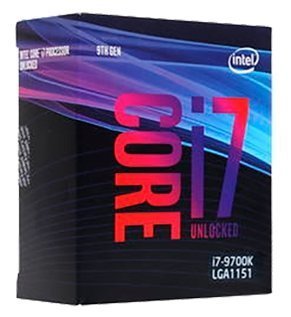 9.7 / 10
Rating
Reviews
In my opinion, in the 9th generation, the optimum - i9, if it “opens dance”, not now. And the difference in price, I better in memory or video card vkinu. |
|
41 990
The processor won ambiguous glory almost immediately after the announcement, and not only because of the managed to grow even before the start of sales prices. Of course, 8 physical cores with support for Hyper-Threading, and even a regular boost from 3.6 GHz right up to 5, give excellent performance in a single-core, multi-threaded, and even solder under the lid made it possible to rely on the absence of problems with overheating, sadly remembered from the time of i7-7700K, which could overheat even without overclocking. But, alas, the 5 gigahertz joyfully proclaimed by marketers is available only for a short time, and this is not surprising: if you fix the frequency at this value (the multiplier is unlocked), the processor turns from a regular 95 watts into a “stove” with a power far beyond 200 W and what? Yes, it is also clearly overheated. If we are already accustomed to scalping previous generations and replacing the thermal interface with “liquid metal”, then the grinding of the processor chip itself, demonstrated by the notorious Der8auer, in order to reduce its thickness (the thermal conductivity of the “dead” silicon layer is not so high — almost three times). less than copper, and even decreases with increasing temperature) even for overclocking enthusiasts seemed overkill. So, since you are choosing a top-end Intel Core i9 processor, don't forget about a motherboard with a powerful power subsystem, and good cooling. Nevertheless, in the consumer segment, the current flagship Coffee Lake Refresh is still leading in performance. But there is one “but”: in work tasks (for example, in compiling complex code or in rendering) it is inferior to HEDT processors of as many as 7 generations, and often to “red” Threadripper. As for games, the gap from the much more affordable i7 8 generation is a tiny percentage - and this despite the fact that 9900K has two cores more. When using 4K resolution, the difference may not be at all. What is there to do? Wait for the appearance of more optimized games for multithreading, but now buying an i9 for a gaming assembly will most likely be an overpayment. Main advantages:
Minuses:
|
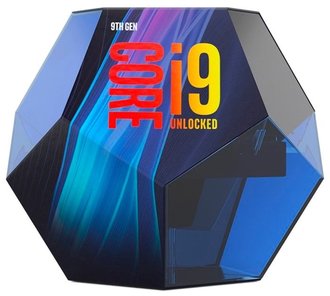 9.7 / 10
Rating
Reviews
I bought it with a reserve for the future - now the software will obviously be optimized for 8/16, so I will have enough of it for the near future. |
Intel's top midrange processors
|
22 118
In fact, we do not have an eighth-generation i5 improved processor, but a “neutered” new i7: here two of eight cores with the corresponding part of the cache memory, rejected during factory testing, are disabled.However, the TDP passport level is the same here as the “source code” (95 W), which should promise us a longer work of the regular boost of frequencies, and better overclocking capabilities. And, indeed, even stress tests with AVX when you turn on Multi-Core Enhancements, which removes some of the restrictions, due to which the turbofeed is “cut” when the power consumption is exceeded, lead to an increase in the processor's appetite to just 120 watts. And this is a level that is quite acceptable for medium-level VRM motherboards. Therefore, buying a “trim” i7, you can get a good increase in speed without a special witch and clever cooling systems. Moreover, despite the increase in power consumption in comparison with the i5-8600K (for example, at 4.5 GHz at a voltage of 1.3 V, the old “fifth” consumed 23 W less), the core temperature almost did not change - that's the bonus for solder instead of thermal paste But let's talk about the most "tasty" - about performance. In resource-intensive applications, the processor, in general, corresponds to its price at the level of other Intel “stones” - the gap, for example, from 9900K corresponds to the price difference, which is almost twice as expensive and twice as fast. But not always: when processing photos in Lightroom, the “fifth” is already catching up on the gap, reducing it to 1.15 times (so photo lovers should think about good savings - enough for a new lens), in video encoding - up to one and a half. And in all such cases, the processor is inferior to the Ryzen 7 2700X, which can be found in stores for the same price. What is the "five-nine"? Expected - in games. Here, at the runoff frequencies, it is already comparable with the previous generation's “i-seven”, and in the overclocking, even the current one. So, with a reasonable budget limit, we can recommend this processor to gamers, it will justify its money. Main advantages:
Minuses:
|
 9.7 / 10
Rating
Reviews
More than a playable processor with a reasonable price, the same i7 is already falling out of my budget. |
|
14 218
But “i-third” are still out of Coffee Lake Refresh: only the eighth generation of i3 is released, and the Core i3-9350K processor discussed in the computer press still remains in the discussions, the official website of Intel is completely silent. Well, if we have a limited budget, or the capacity of the processor with the formula "4 cores / 4 threads" is enough, then you can look at the 8350K. Yes, the processor is not fresh - its architecture, albeit combed, but goes back to the 2011 i5. Unless the video core has changed radically since then, but by today's standards it is still frankly weak. However, the relatively high standard clock frequency (4 GHz) allows the processor to tolerably show itself in demanding applications and in not very processor-specific games. Here he often goes head-to-head from the eighth generation i5. Therefore, both now and in the near future, it will retain its appeal for medium-sized game assemblies, taking into account the price. Although the "red" in this price segment already have something to answer, and this also can not be discounted. Main advantages:
Minuses:
|
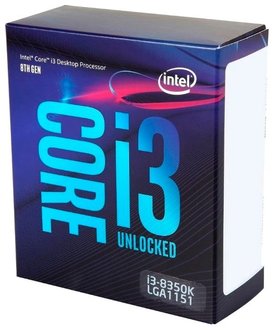 9.0 / 10
Rating
Reviews
It shows itself quite well, it rolled over from i7-2600 with the same 4 cores - a new one, albeit an i-three, but noticeably quicker, and especially in new games. |
Top entry-level Intel processors
|
7 590
Yes, two physical cores, let you and the "gold", now look dull. Although here there is Hyper-Threading, but with quad-core processors of the same generation, the "stub" in performance can not be compared.However, the fact that it is released on the LGA1151-v2 socket will further allow an upgrade to more efficient processors of the eighth to ninth generation at least, if you immediately shift the budget balance towards the motherboard. That is, the "hyperpension", as before, for many, takes the position of a kind of "gag" for the period of accumulation of money for an upgrade. Compared with the previous "stumps", the new one received a faster cache with a slightly increased volume, formally even overtaking the seventh generation i3, then also having also only two physical cores. However, Intel still does not provide the Pentium series with support for the AVX and AVX2 instructions - of course, the processor becomes cheaper and colder from this, but in applications using vector computing, even the old and twice cheaper AMD FX-8320e will laugh at the stump. which and with multithreaded computing the situation is better. In games, this is not important, so here the “stump” is still more or less viable, although in actively using multi-threading (for example, many games with an open world, where NPC set code is parallelized) it loses to both younger Ryzen and “grandfather” FX . Main advantages:
Minuses:
|
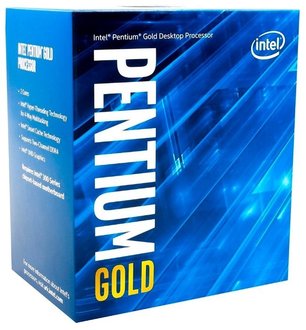 9.0 / 10
Rating
Reviews
Well, for an inexpensive computer normally. Then, if anything, and I can upgrade without any problems. |
... And finally
You, probably, noticed that all processors selected by us for the rating use the same socket - LGA 1151 v2. Now it can be considered the best choice for assembling - all processors of current generations work on it, from "seleron" to "ah-ninth", it is for it that new chipsets are developed. Although officially the Kaby Lake processors (seventh generation, LGA 1151) on v2 boards are not supported, the limitation is not hardware, but software: it has already been proven that you can run Kaby Lake on newer boards with modified BIOS code.
Upgrading to new generations also makes sense because of the revealed vulnerabilities of the old series: the fact that working attack mechanisms using the same Meltdown have not been specifically shown now does not mean that there will never be any. It means that you will have to put up with security patches that cut performance, or choose a processor where at least some of the “holes” are removed by hardware.
We decided not to include the HEDT-series processors intentionally: they are “sharpened” precisely for serious multi-threaded load, that is, for the average PC user, their high price and not less high power consumption will not pay for themselves in any way.
